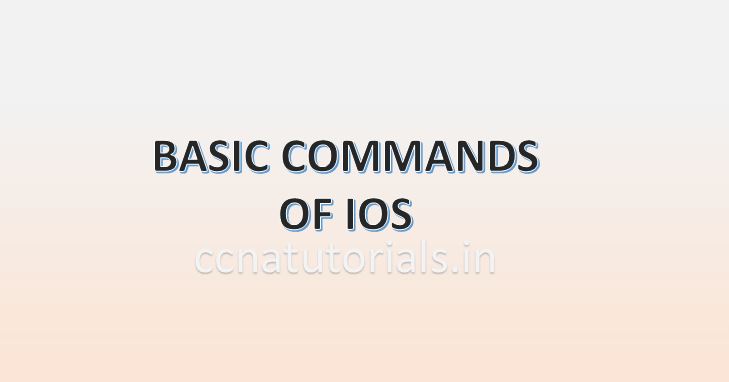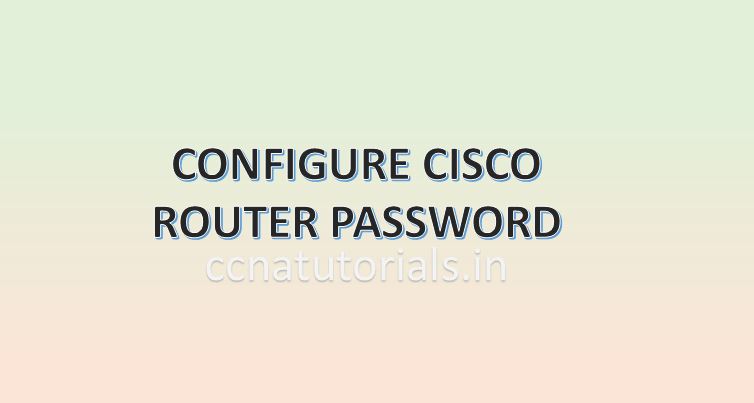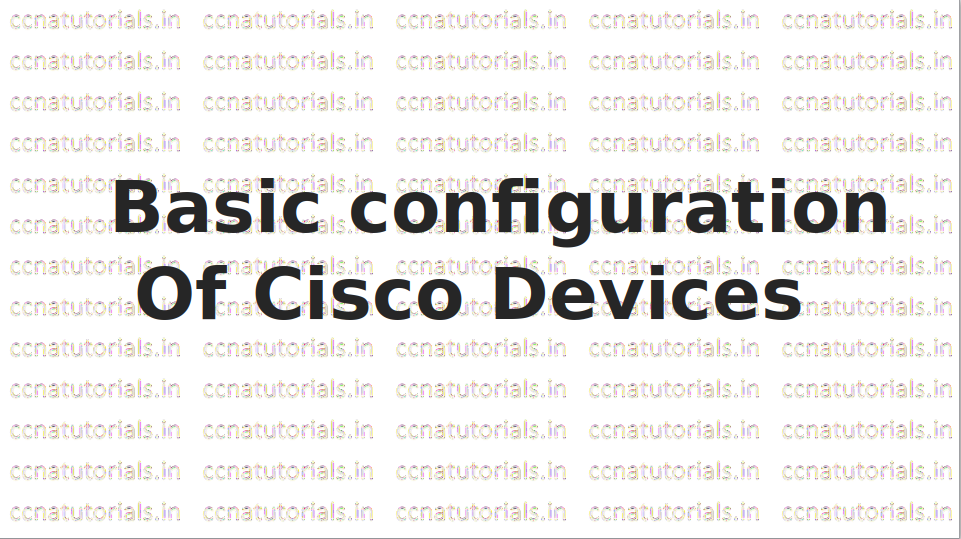In this article I describe the IOS Booting sequence in cisco networking devices like routers and switches. IOS is acronym for Internetwork Operating System which is related to Cisco networking devices. IOS Internetwork Operating System provides the facility to configure and maintain the networking devices in the network. The network administrator can change the configuration and maintain the networking device in a network by using IOS.
IOS is an application which run as operating system for the networking devices like router or switch. IOS provide a command line interface to a remote computer. The IOS load after a fix booting sequence of IOS every time when we boot the router or switch. So before learning about the Booting Sequence of IOS lets see some basic fundamentals of IOS Internetwork Operating System.
IOS Internetwork Operating System
IOS Internetwork Operating System is a Cisco propriety for Cisco networking devices like routers and switches. Network administrator can take the CLI of any networking device from a computer in the network. All the routing configuration and other settings saved in the IOS Internetwork Operating System of router. IOS Internetwork Operating System provide to do any changes on any interface or the router or switch.
The IOS Internetwork Operating System provide to maintain the networking device from a very far location remotely. IOS of Cisco can be integrated with other networking devices like IBM and SNA. The interface of IOS Internetwork Operating System is very user friendly, the user can take the help about any command from CLI of a device.
The IOS Internetwork Operating System allow to configure the encryption, routing and authentication in the router or switches. IOS Internetwork Operating System have three variants XE, XR and Nexus. The XE version available with aggregation service routers and catalyst switches. XR version available with carrier routers.
Nexus allow to configure the Nexus family devices. Before IOS Internetwork Operating System Cisco run the CatOS on its networking devices. IOS Internetwork Operating System is operating system independent means you can run the IOS on windows as well as on Linux or Unix operating system. The IOS developed in the decade of 1980 for Cisco routers.
Command-line interface of IOS Internetwork Operating System
the CLI of IOS Internetwork Operating System provides some preset commands for maintain and configure the networking devices. There are multiple command modes provided by the CLI of IOS Internetwork Operating System. The command modes are EXEC mode, Privilege Exec mode, Global Configuration mode, ROMMON mode and setup mode. Each mode provide some additional features of various level for configuration the router or switch. The router and switches are microprocessor based so the IOS Internetwork Operating System works like an operating system for computer. When we start the computer the operating system of computer boot in a fix sequence. Similarly the IOS Internetwork Operating System have a fix boot sequence. So lets see the IOS Boot sequence in detail.
IOS Booting sequence
IOS Booting sequence is fix for all the Cisco networking devices like routers and switches. We know all microprocessor controlled devices run a fix booting sequence. Similarly the IOS Boot sequence is predefined in all networking devices of Cisco. Multiple memories of Router and switches take part in IOS Boot sequence. IOS Booting sequence have a fix flow chart as shown in the image below. The IOS Booting sequence is a systematic process done in all Cisco networking devices. IOS Booting sequence take some time to make the router or switch in working condition.
All the routing configuration data and other settings load during the IOS Boot sequence when the router is power on or reboot manually. All the parts of routers and hardware peripheral checked during the IOS Boot sequence in routers and switches. After completion of IOS Booting sequence the IOS loaded in the RAM of the router and provide the IOS user interface. Networking administrator can access the networking devices by the CLI interface of the router. The CLI allowed to work only after completion of the IOS Booting sequence in the router or switch.
Types of memory used by Cisco routers for IOS Booting sequence
There are multiple types of memory available in the router which takes part in the IOS Boot sequence. It is necessary to know about the various types of memory used in router for various purpose. We can say that each memory is responsible for different taks during the IOS Boot sequence. A Cisco router contains four main memories RAM, ROM, NVRAM and Flash memory.
RAM stands for Random Access Memory which is like a RAM in any computer. In a Router, RAM stores the running configuration and routing table with routing protocol. The IOS loaded in the RAM After the completion of IOS Booting sequence in the router. RAM stores the data until the router is power ON. After shutting down the router, all data stored in RAM will erase automatically.
ROM the Read Only Memory stores the data permanently in it. The ROM loaded the previously saved configuration after completion of IOS Booting sequence in router. Mostly the bootstrap start up program stored in ROM. The initial function known as POST is also stored in ROM and run during the first step of IOS Booting sequence in router.
NVRAM memory is a type of RAM but it is Non-Volatile. The data saved previously in the NVRAM loaded after completion of IOS Booting sequence in router. It means the data stored in it doesn’t depends on Power on or off. We can write the data multiple times on it. ROM is read only memory. The main difference between NVRAM and ROM is that data of NVRAM can be changed by configuration.
Another type of memory available in router is Flash memory. Flash memory keep save the IOS image. Flash memory is read and writable memory. In case of any error in the IOS Booting sequence the image of IOS can be used for booting the router.
Cisco Router IOS booting sequence step by step explained.
Let’s see the IOS booting sequence when a Cisco router power on or reboot. When we power on a Cisco Router then firstly a POST test runs in it. POST stands for Power On Self Test. POST stored in ROM and call from there during the IOS booting sequence in router. During POST test all ports, hardware and peripherals of the router checked. If there is any hardware found defective, then a predefined symbol gives the alert. After successfully pass the POST Bootstrap program loaded and executed. The Bootstrap program defines that how the Router will be boot or we can say the IOS booting sequence runs from the Bootstrap program.

After successfully passing the POST test next step of IOS Booting sequence is to find the IOS and load it into RAM. The Bootstrap reads the configuration register value. These configuration register value defines how the router will be boot up and what will the IOS Booting sequence of router? Bootstrap program initializes the hardware and locate the IOS file location and load the IOS image.
Generally, the IOS image remains in the Flash memory. The Bootstrap program locate the IOS image and load it from flash memory. Sometime due to hardware failure or any mishaps the IOS image may not be available in the flash memory.
In case the IOS image is not available in the flash memory. The Bootstrap search for IOS image in the TFTP server. TFTP server is an alternate option. TFPT is Trivial File Transfer Protocol server which is configured in any computer which is present in the network. If there is any TFTP server available in the network, the bootstrap locates the IOS image and loaded it.
What if there is not any TFTP server in the network ?
The IOS Booting sequence search for the IOS image to load the IOS. If there is not any TFTP server and the IOS image is not available in Flash memory, then boot strap act like ROM-Monitor mode. ROM-Monitor mode can provide the command line interface. By this command line interface, the network administrator can set some configuration in router. A start up configuration is always available in the NVRAM memory of router. During IOS Booting sequence This start up file of NVRAM will load and apply the configuration commands in start-up configuration. In case the start-up config file is not available in NVRAM the IOS will display system configuration setup to the user. IOS display the command line to the user.

The above is the full IOS Boot Sequence in router. The user can get the Commmand line interface after completion of IOS Booting Sequence in router or switch. It is easy to understand the IOS boot sequence by learning steps as shown in first image in this article.
In this article I describe the IOS Booting Sequence in router. I hope you found this article helpful for any query or suggestions on this article you may drop a comment below or contact us. Your suggestions are always welcome by us.







You have brought up a very excellent points, thanks for the post.